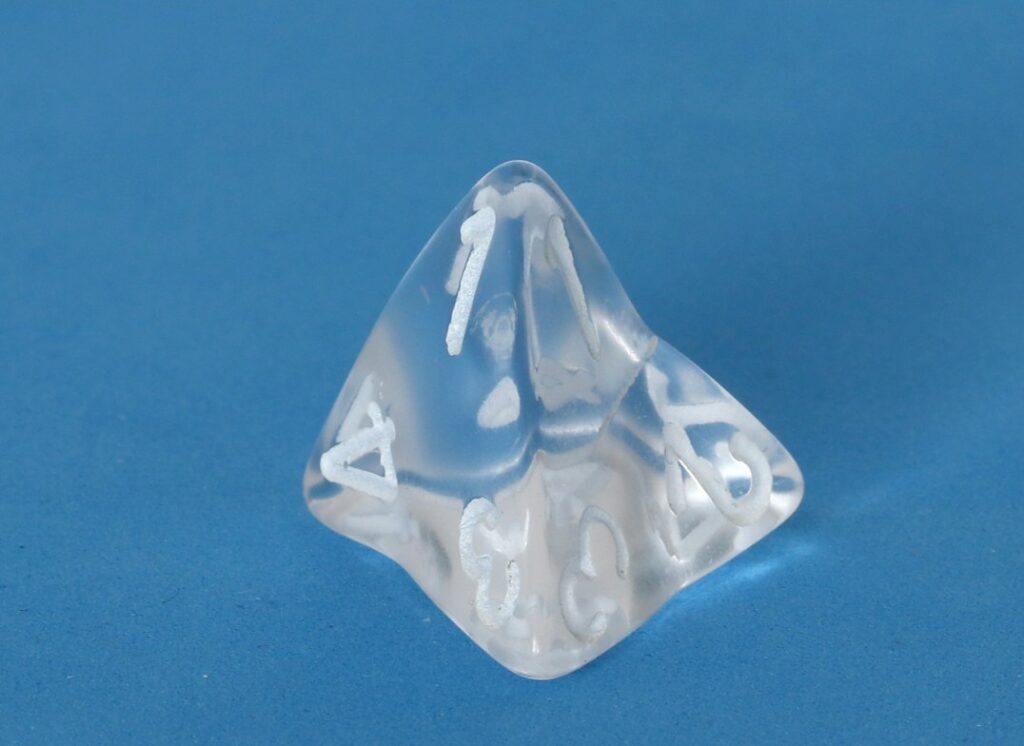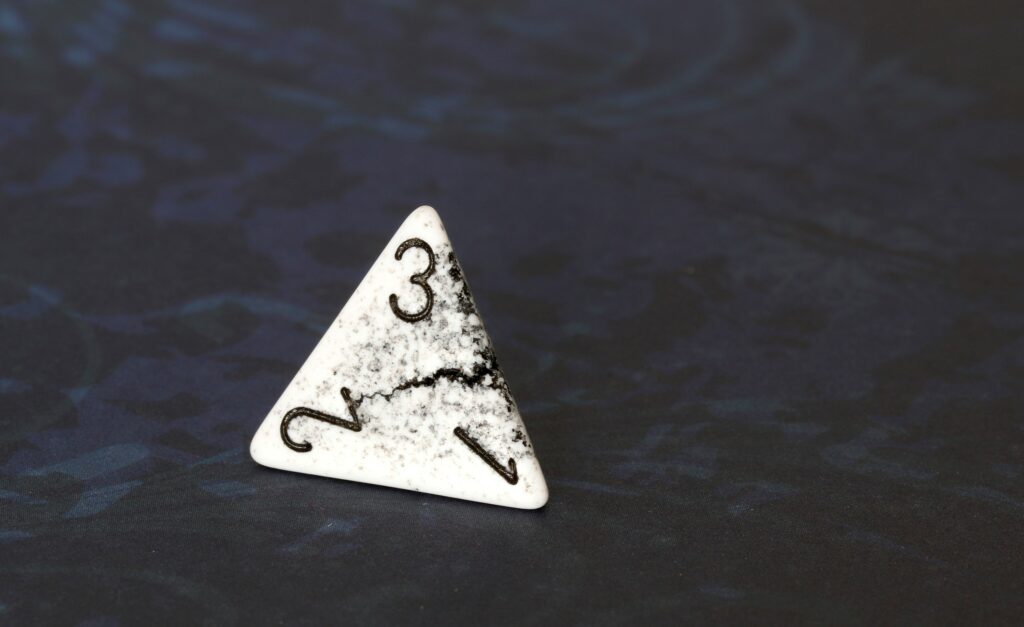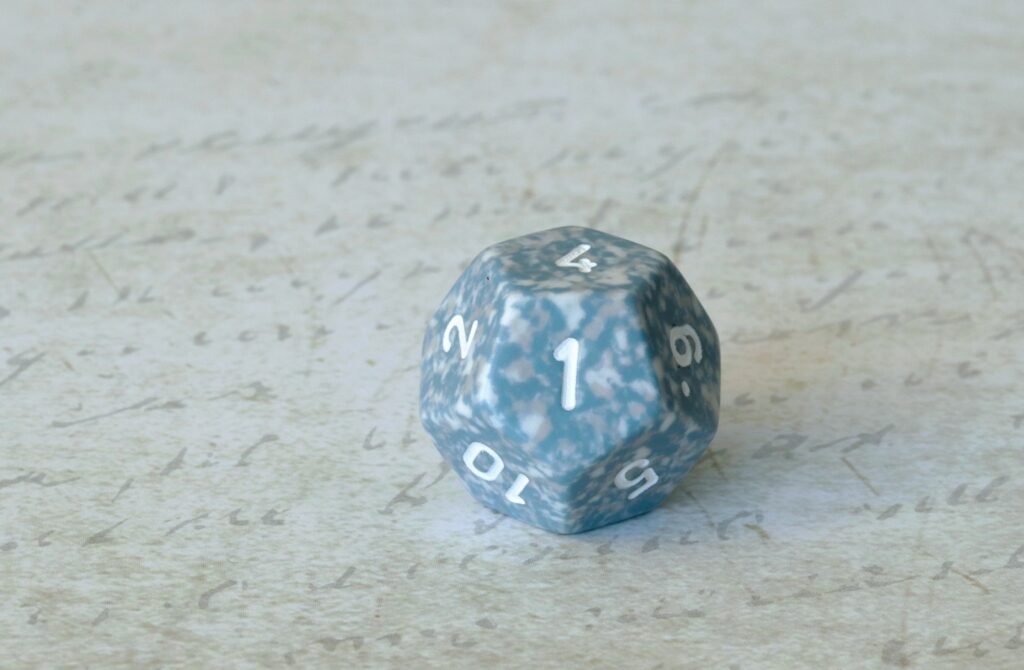For the next two weeks, I will make daily posts where I’ll spotlight unusual or lesser known dice that I have in my collection that I hope are interesting for everyone to see and learn about. Each day I’ll cover a different theme, I hope you enjoy this series.
Damaged or Faulty Dice
Many of us will have come across damaged dice, and usually that’s a nuisance because we want our dice sets as pristine and playable as possible, so then you reach out to customer service and get your damaged dice replaced, right?
Sometimes, damaged dice can also be interesting if it’s more than just a chipped edge or a broken-off tip or a groove or scratch or massive sprue mark.
This d4 is a super warped acrylic Translucent Clear w/white that must have gotten in a heated place that wasn’t supposed to be heated. I can only assume this came out of a PoD where most of the Chessex B-grade dice go.
At the Spiel fair in 2019, Chessex sold a whole batch of Opaque White d4s gone wrong, which had these really interesting ragged cuts running through the dice. They are oddities for sure, and sometimes I’m tempted to try and fix this one with the kintsugi technique.
I was gifted this rather unusual assortment of failed d12s (and one d20) that I love because they’re all little dice Pacmans (Pacmen?). Of course I had to repurpose one of them into a Dice Mimic.
This reinked old mould Speckled Air d12 is interesting in that the 1 is upside down. Normally the numbers are oriented so that the bottom of the number is towards a straight edge of the face. In this case, the bottom of the number is towards a corner where two edges meet.
This is fairly rare but can happen when the plunger is oriented the wrong way. Urea d12s (and actually also d20s) have a so-called plunger as part of the physical mould that pushes the dice out of the mould after they have hardened. For the d12 and d20, the number 1 is on the plunger and thus part of the mould. Since the plunger is round, it can happen that it’s not perfectly aligned, and then something like this might happen.
This is also the reason why sometimes the Chessex Opaque or Speckled dice have a round mark around the 1 – this is basically the plunger mark that was too deep to be fully polished away.






